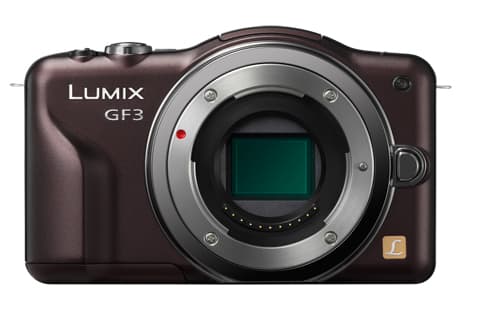Panasonic has today signalled its intention to further widen the market for Micro Four Thirds cameras by aiming its new Lumix GF3 at entry-level users.
READ FIRST LOOK REVIEW OF GF3 HERE
Panasonic claims that the Lumix GF3 is the firm?s smallest and lightest compact system camera (CSC) to date.
Sitting below the Lumix GF2 in the range, the GF3 will cost £499 with a 14-42mm OIS lens. It is due to go on sale in the UK in mid-July.
Coinciding with the launch there will be a new Leica-branded 25mm f/1.4 Micro Four Thirds lens (H-H025). Panasonic says the GF3 will also be compatible with the Lumix G 3D 12.5mm f/12.
Speaking to Amateur Photographer (AP)?s technical writer Richard Sibley, DSC director Ichiro Kitao said Panasonic produced a model at the lower-end of the G-series because it wants to ?spread the GF concept to more entry-level users?.
Featuring the same 12.1-million-pixel imaging sensor as the GF2 and GF1 models, the GF3 is claimed to be 17% lighter (222g) and 15% smaller than the GF2.
The GF3 lacks a hotshoe but sports a pop-up flash, burst rate of four frames per second, 3in (460,000 dot resolution) touch screen, touch AF and a Full HD (1080i, AVCHD-format) movie mode.
Equivalent ISO sensitivity ranges from ISO 160-6400 and digital effect options include Retro, High Key, Sepia and High Dynamic.
And Panasonic has added a control wheel to the back of the camera, allowing users to scroll through their images and key functions.
AF modes include pinpoint AF, which can be controlled using the touchscreen and is featured on the recently announced G3.
Panasonic claims that the GF3 can automatically focus on a subject in around 0.18secs.
In an interview with AP, Kitao said Panasonic is committed to the Micro Four Thirds system and has no plans to change the sensor format. ?Once we launched the G system we have a responsibility to continue the system,? he said.
Kitao told us that Panasonic is ?always looking to develop higher resolution or higher sensitivity?.
But he doubts whether customers really want high pixel counts. ?If we continue to raise the resolution it becomes very difficult to offer high quality video, due to the heat [generating] problem.?
Asked why G-series cameras have sold well in Asian countries, Kitao attributed the success to young women. ?For example, in Japan one third of DSLR and compact system cameras are now bought by women,? he explained.
There will be two other kit options. The GF3 will be available with a 14mm lens in an outfit priced £549; or with a 14-42mm and 14mm lens for £629.











